Scales aren’t just for fish—they’re for warriors.
From ancient dragons in myths to real-life creatures that shimmer, slice, and survive, scaled animals are built like living armor.
They glint in the sun, rattle warnings, and sometimes look like they’ve stepped out of a fantasy novel.
You don’t mess with scales. You admire them. From a safe distance.
Some glide through oceans like blades.
Others creep silently, protected by nature’s chainmail.
And a few will leave you staring, wide-eyed, wondering, “What on earth is that?”
This isn’t your average nature list.
We’re diving into creatures that wear their toughness on the outside.
Sleek. Strange. And in some cases, downright terrifying.
Let’s meet 16 animals that turned scales into their signature look.
King Cobra
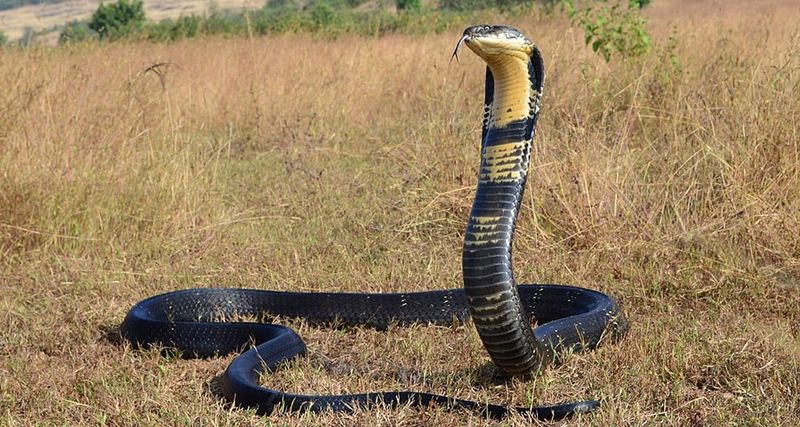
The King Cobra, revered and feared, is more than just the world’s longest venomous snake. Imagine the quiet of a Southeast Asian forest, suddenly interrupted by its commanding presence. As it raises its hood, the intricate design of its scales creates a mesmerizing pattern.
Despite its fearsome reputation, the King Cobra avoids confrontation with humans. It prefers to feast on other snakes, showcasing its role as a top predator. Interestingly, its venom, a potent neurotoxin, is carefully used, often to scare rather than kill.
Pangolin
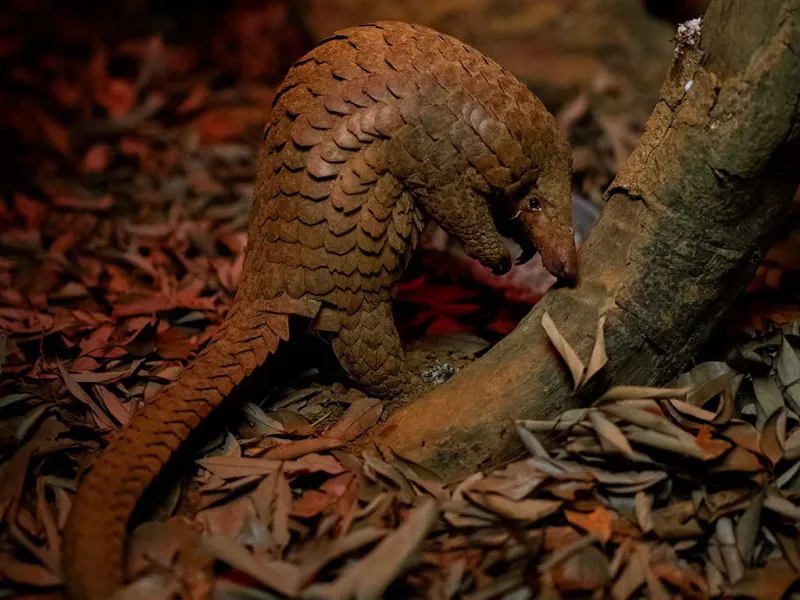
The Pangolin, often mistaken for a reptile, is a unique mammal covered in tough, overlapping scales. These scales offer protection, allowing the Pangolin to curl into a nearly impenetrable ball when threatened.
Despite its armored appearance, the Pangolin leads a solitary and gentle life, mostly feeding on ants and termites. It uses its long, sticky tongue to gather its meals. Sadly, this fascinating creature is critically endangered, hunted for its scales and meat, driving conservation efforts worldwide.
Iguana
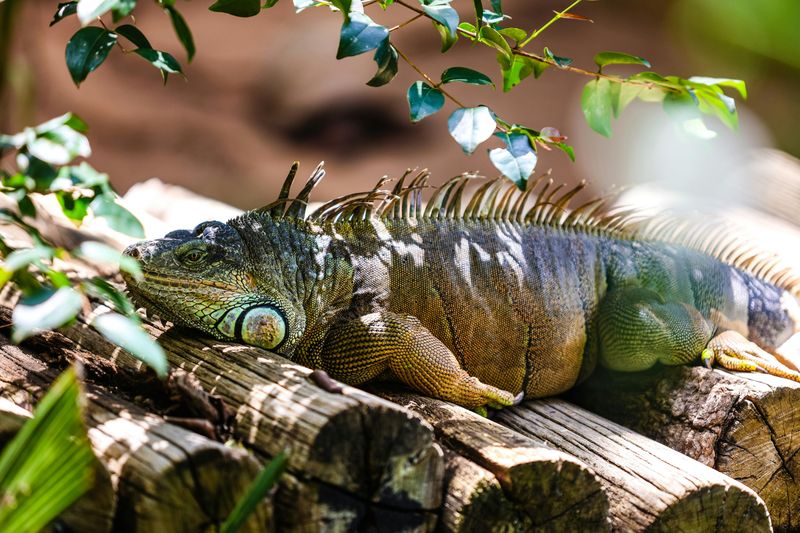
With its bright green body and dewlap, the Iguana is a striking sight. These arboreal reptiles, often seen lounging in the sun, use their scales for both protection and camouflage.
Apart from their distinctive appearance, Iguanas are known for their remarkable agility. They can leap between branches or dive into water to evade predators. Their diet mainly consists of leaves and fruit, making them an important component of their ecosystem.
Armadillo
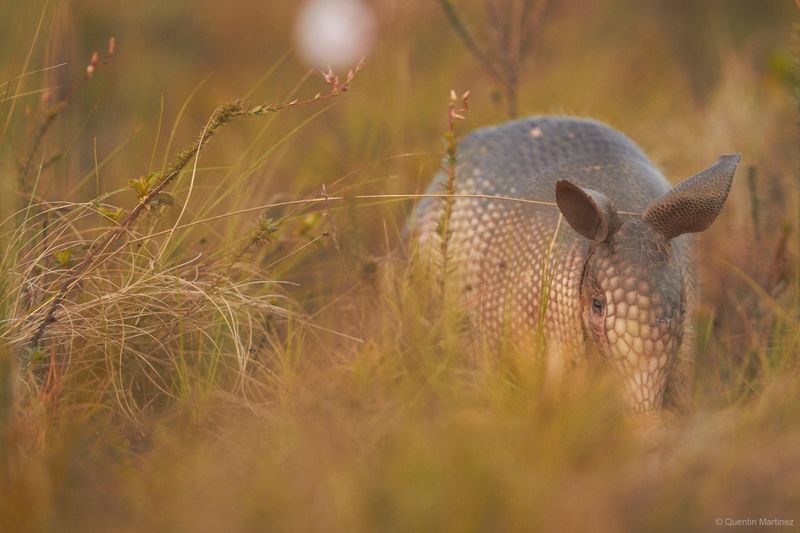
The Armadillo, a small armored mammal, is known for its unique shell composed of bony plates and scales. This natural armor provides protection against predators, allowing it to curl into a ball when threatened.
Armadillos are primarily nocturnal and have a keen sense of smell, which they use to forage for insects and small vertebrates. Despite their tough exterior, they are surprisingly gentle creatures, often seen in the grasslands of South America, contributing to the biodiversity of their habitat.
Komodo Dragon
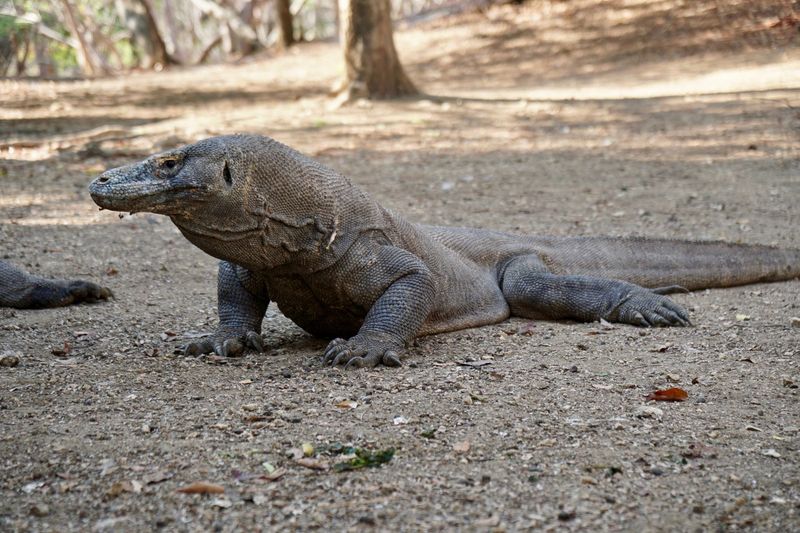
As the largest living lizard, the Komodo Dragon commands attention with its formidable size and strength. Found on a few Indonesian islands, this apex predator has a keen sense of smell, detecting prey from miles away.
Its scales, though coarse and rugged, shimmer subtly in the sunlight, concealing an arsenal of bacteria within its saliva. This grim adaptation ensures that any prey escaping its initial attack will likely succumb later. A true marvel of nature, the Komodo Dragon balances power with a certain prehistoric elegance.
Chameleon
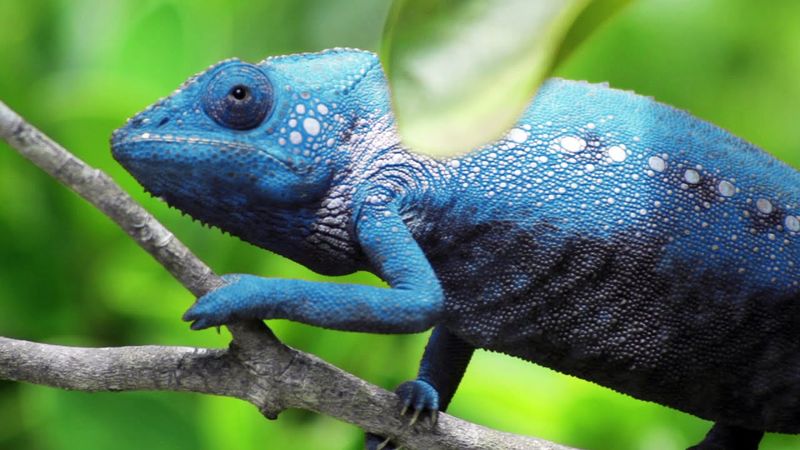
Chameleons, with their remarkable ability to change color, have scales that play a crucial role in their survival. These reptiles, often found in rainforests and deserts, use their color-changing ability not just for camouflage but also for communication and temperature regulation.
Their zygodactylous feet and prehensile tails complement their adeptness at navigating arboreal habitats. The Chameleon’s independently mobile eyes provide a nearly 360-degree field of vision, making them exceptional hunters. Their presence adds a splash of magic to any green canopy they inhabit.
Alligator
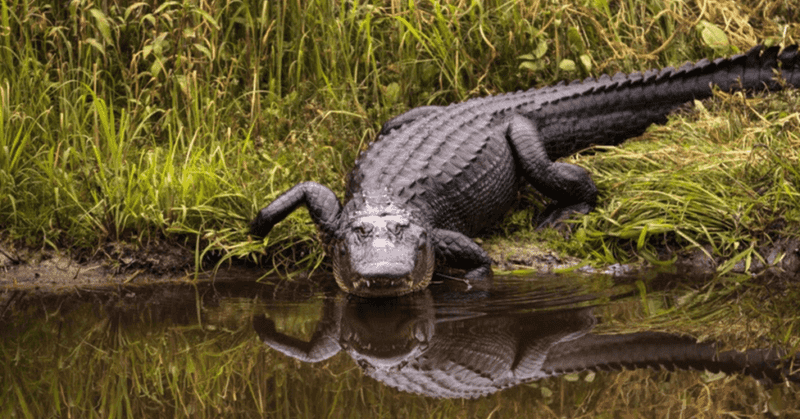
Alligators, ancient relatives of dinosaurs, are iconic residents of American wetlands. Their powerful jaws and muscular bodies are complemented by a rugged armor of scales, offering protection and camouflage.
These scales, interlocking like a jigsaw puzzle, help alligators regulate their body temperature and blend into their murky environments. Alligators are opportunistic feeders, often seen gliding silently through swamps, waiting for the perfect moment to strike. Their evolutionary adaptations have made them successful survivors for millions of years.
Monitor Lizard
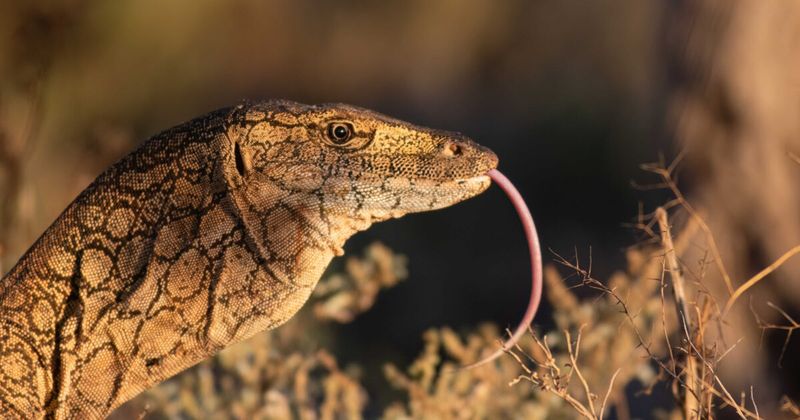
Monitor Lizards, known for their intelligence and adaptability, are a diverse group of reptiles with scales that reflect their varied habitats. From the deserts of Australia to the forests of Africa, these lizards thrive in numerous environments.
Their muscular bodies and strong limbs enable them to be excellent climbers and swimmers. Monitor Lizards are carnivorous, feeding on a wide range of prey. Their keen senses and quick reflexes make them formidable hunters, and their scales provide the perfect armor to navigate their often harsh habitats.
Rattlesnake

Rattlesnakes, with their distinctive rattles, are one of the most recognizable snakes in North America. Their scales, perfectly adapted for camouflage, allow them to blend seamlessly into their desert habitats.
These snakes are pit vipers, equipped with heat-sensing pits that help them detect warm-blooded prey. Although their venomous bite is feared, Rattlesnakes play a crucial role in controlling rodent populations. Their presence is a testament to the delicate balance of their ecosystems, where they act as both predator and prey.
Gecko

Geckos, with their enchanting eyes and unique adhesive toe pads, are a marvel of the reptile world. Their scales, while seemingly delicate, are part of a complex system that allows them to climb vertical surfaces effortlessly.
These nocturnal creatures are found on every continent except Antarctica, showcasing their adaptability. Geckos communicate through chirps and clicks, and some species can even change color. Their presence in homes, especially in tropical areas, is often considered a sign of good luck.
Gila Monster
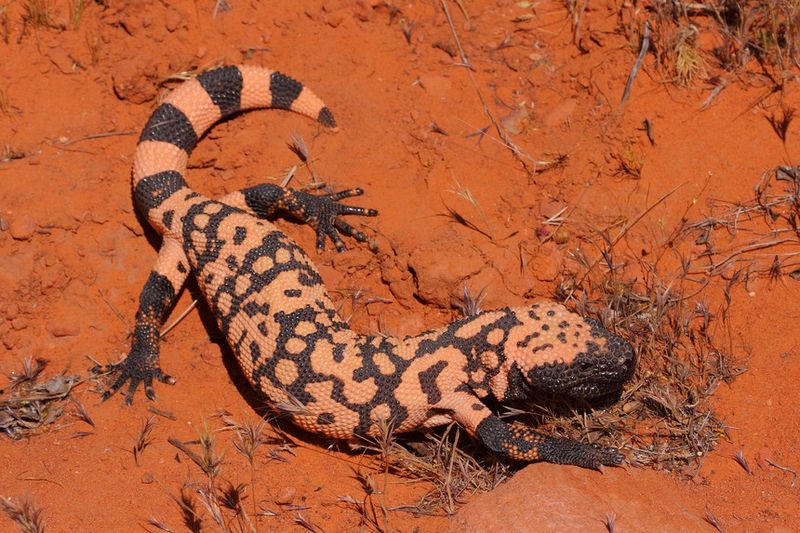
The Gila Monster, one of the few venomous lizards, is as striking as it is dangerous. Found in the deserts of the southwestern United States, its beaded scales create a distinctive look.
These lizards spend most of their time underground, emerging only to feed and bask. Their venom, used primarily for defense, is delivered through grooved teeth rather than fangs. Although the Gila Monster is slow-moving, its bright coloration is a warning to potential predators, emphasizing its toxic nature and formidable presence.
Skink
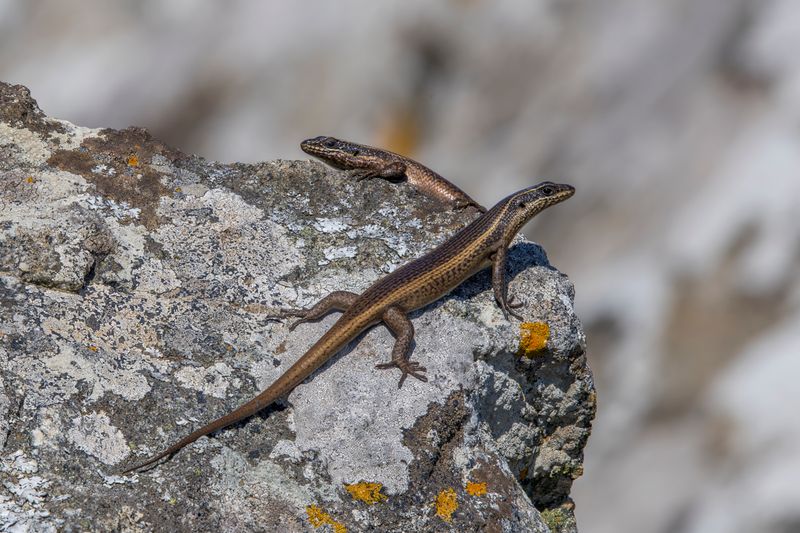
Skinks, with their sleek bodies and smooth scales, are masterful at evading capture. Their scales, often glossy, help them slip through tight spaces and escape predators.
These reptiles are found in various habitats, from forests to grasslands, adapting well to different environments. Skinks are known for their regenerative abilities, often shedding their tails to distract predators. Their diet consists mainly of insects, making them vital for pest control in their ecosystems.
Bearded Dragon
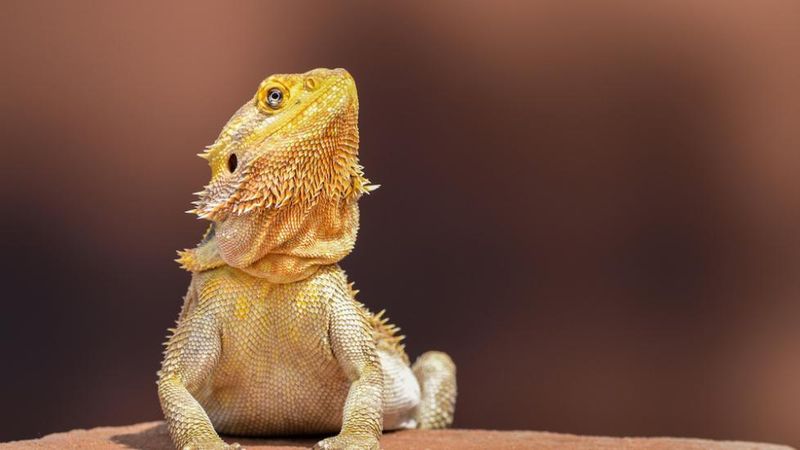
Bearded Dragons are popular pets, known for their docile nature and striking appearance. Their scales, adorned with spiny projections, help them blend into their arid environments.
When threatened, they display a unique behavior by puffing out their throat, creating the illusion of a beard. This captivating reptile is native to Australia, where it thrives in a variety of landscapes. Its diet is omnivorous, consisting of both insects and plant matter, providing a balanced ecological role.
Basilisk Lizard
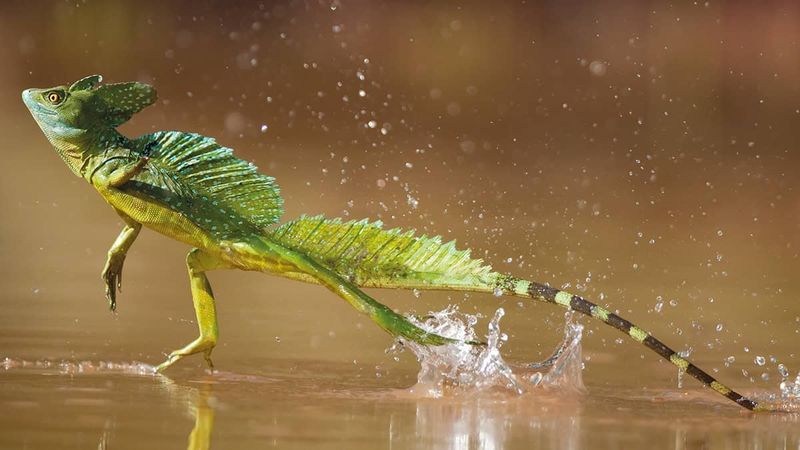
The Basilisk Lizard, often called the “Jesus Christ” lizard, is famous for its ability to run on water. This remarkable skill, aided by its lightweight body and specialized scales, is a sight to behold.
Found in Central and South American rainforests, it uses its speed to escape predators and catch prey. The Basilisk’s diet includes insects and small vertebrates, and its adaptability allows it to thrive in diverse environments. Its unique locomotion and vibrant appearance make it a true spectacle of nature.
Sea Turtle
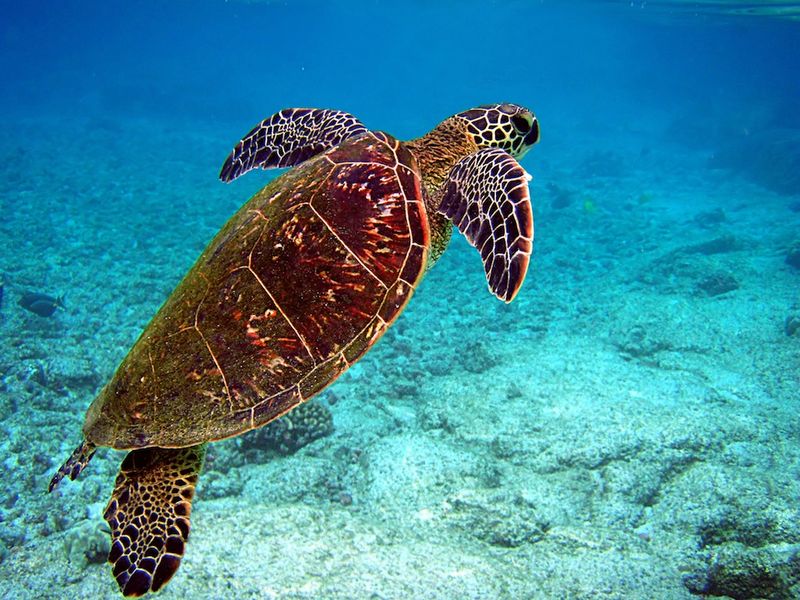
Sea Turtles, ancient mariners of the ocean, are beloved for their graceful presence and enduring strength. Their scales, along with their hard shells, offer protection as they traverse vast oceanic distances.
These reptiles have a gentle demeanor, often seen gliding through the water with effortless grace. Sea Turtles play a pivotal role in marine ecosystems, maintaining healthy seagrass beds and coral reefs. Despite facing numerous threats, conservation efforts continue to ensure their survival for future generations.
Thorny Devil
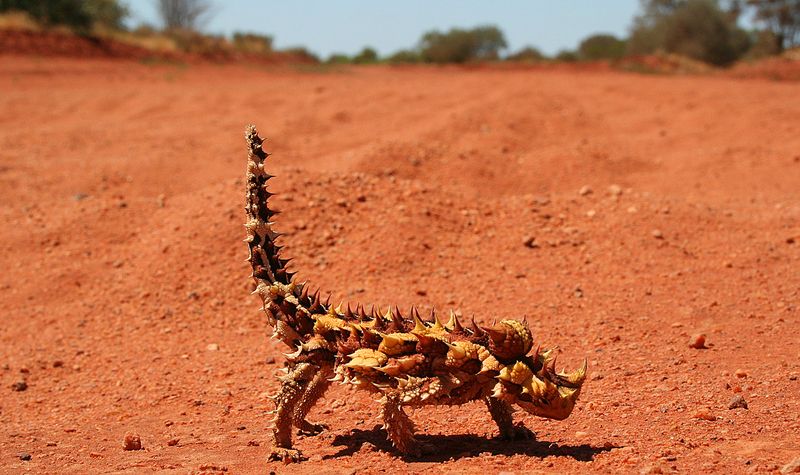
Ever seen a lizard that drinks with its skin? Meet the Thorny Devil, a marvel of nature! With scales that resemble tiny thorns, this Australian native is perfectly adapted to its arid surroundings. Each scale serves a unique purpose, channeling moisture directly to its mouth.
The Thorny Devil’s coloration provides perfect camouflage against predators. Its slow, deliberate movements mimic the swaying of the desert flora, making it almost invisible in the wild.
Fun fact: This remarkable reptile can consume thousands of ants in one meal. Such adaptations make the Thorny Devil a true desert survivor!

